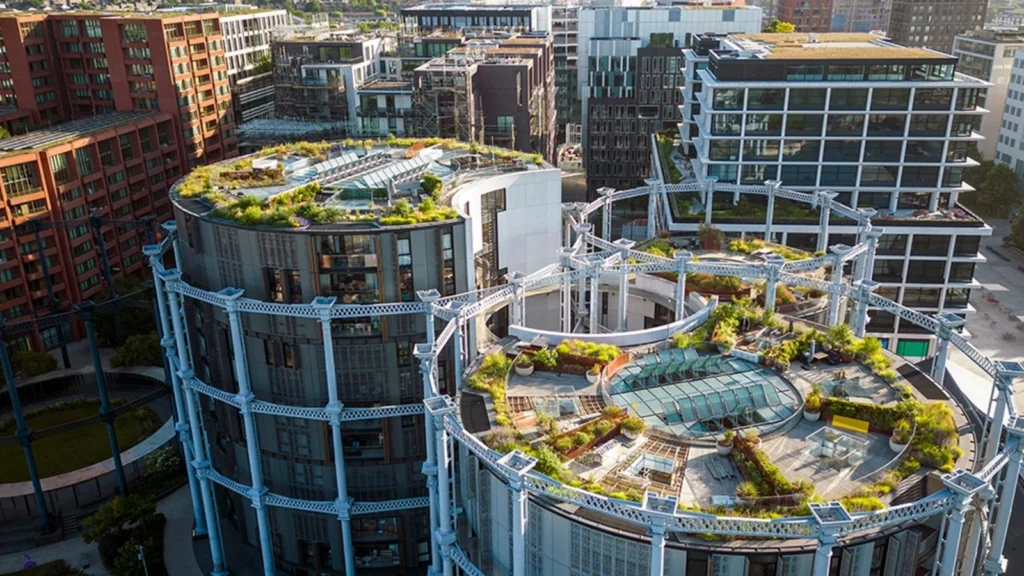
Rainwater Harvesting in Green Buildings: A Sustainable Approach
As the world moves towards sustainable living, the concept of rainwater harvesting in green buildings has become an integral part of environmental conservation. Rainwater harvesting is not just an innovative solution but a necessity in today’s world where water scarcity is becoming a significant issue. Green buildings aim to reduce the negative impact on our environment, and incorporating rainwater harvesting can significantly enhance their efficiency. But what exactly does this process involve, and how can it benefit both the environment and individuals?

What is Rainwater Harvesting?
Rainwater harvesting is the process of collecting and storing rainwater for future use. This can be done through a variety of methods, such as rooftop collection or surface runoff harvesting. The collected water is then filtered and stored for non-potable uses like irrigation, flushing toilets, and even laundry. In green buildings, rainwater harvesting systems are designed to maximize water conservation and reduce dependency on municipal water supply.
The Importance of Rainwater Harvesting in Green Buildings
Integrating rainwater harvesting systems in green buildings addresses several environmental concerns. It reduces water demand, minimizes stormwater runoff, and supports sustainable water management practices. This integration not only benefits the environment but also offers economic advantages by reducing water bills and conserving natural resources.
Environmental Benefits
One of the primary benefits of rainwater harvesting is its positive impact on the environment. By capturing rainwater, green buildings help reduce urban flooding and erosion. This process also decreases the burden on municipal water systems and conserves groundwater resources, which are crucial for maintaining ecological balance.
Economic Advantages
Implementing rainwater harvesting in green buildings can lead to significant cost savings. By reducing reliance on treated municipal water, building owners can lower their utility bills. Additionally, government incentives and subsidies for sustainable practices can further enhance the economic benefits of rainwater harvesting.
How Rainwater Harvesting Systems Work
The effectiveness of a rainwater harvesting system in a green building depends on its design and implementation. Generally, these systems consist of several components, including a catchment area, conveyance system, filtration unit, storage tanks, and distribution system.
Catchment Area
The catchment area is typically the building’s rooftop, where rainwater is collected. The design of the roof and the materials used can impact the amount of water collected.
Conveyance System
The conveyance system transports the collected water from the rooftop to the storage tanks. This usually involves gutters, downspouts, and pipes.
Filtration and Storage
Before being stored, the water passes through a filtration system to remove debris and contaminants. The filtered water is then stored in tanks for future use.
Distribution System
The final component is the distribution system, which supplies the stored water to various non-potable uses within the building.
Challenges and Solutions
Despite its benefits, implementing rainwater harvesting systems in green buildings can present challenges. Common issues include initial installation costs, maintenance requirements, and potential contamination risks. However, these challenges can be overcome with proper planning, regular maintenance, and use of quality materials.
Overcoming Initial Costs
While installation costs can be high, long-term savings on water bills and potential government incentives can offset these expenses.
Ensuring Water Quality
To prevent contamination, it’s essential to use high-quality filtration systems and maintain them regularly. This ensures the collected rainwater is safe for non-potable use.
Case Studies: Successful Implementation
Across the globe, numerous green buildings have successfully integrated rainwater harvesting systems. These buildings demonstrate the feasibility and benefits of this sustainable practice. For example, some projects have reported a reduction in water bills by up to 50%, highlighting the economic and environmental advantages.
Global Impact and Future Prospects
The global adoption of rainwater harvesting in green buildings is steadily increasing. This trend is driven by heightened environmental awareness and the push for sustainable development. As technology advances, the efficiency and affordability of rainwater harvesting systems are expected to improve, making them more accessible to a wider audience.
For more information on sustainable practices and their global impact, visit the Sustainable Cities and Communities page.

FAQs
What are the benefits of rainwater harvesting in green buildings?
Rainwater harvesting in green buildings offers environmental benefits, cost savings, and supports sustainable development by reducing water demand and stormwater runoff.
How does rainwater harvesting contribute to sustainability?
It conserves water, reduces reliance on municipal supply, and minimizes environmental impact, contributing significantly to sustainability efforts.
What challenges are associated with rainwater harvesting systems?
Challenges include high initial costs, maintenance needs, and contamination risks, but these can be mitigated with proper planning and quality systems.
For more detailed insights on sustainable building practices, explore our Innovative Building Designs and Success Stories on our website.
This article contains affiliate links. We may earn a commission at no extra cost to you.